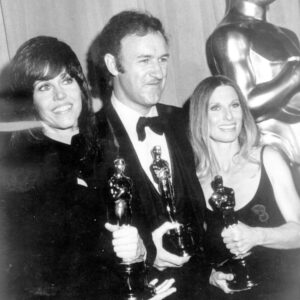In 1947, a 16-year-old high schooler found a lucky penny in his cafeteria and held onto it until he died more than 70 years later.
After his death, the 1943 one-cent piece, known as the “Holy Grail” of pennies, sold for $204,000 at an auction.
Massachusetts-born Don Lutes. Jr. frequently boasted about the penny he found “in the lunch line at Pittsfield High School in 1947.”
The 1943 bronze cent was the first of 12 discovered and Lutes Jr. knew he had a treasure in his hands.
At the time, there was a lot of hype around these coins and the teenager, an avid coin collector, heard a rumor that Henry Ford was willing to give a car in exchange for one of these prized pennies. But when Lutes Jr. contacted Ford Motor Company learned the claims were false, he added the coin to his precious collection.
He also placed an inquiry with the Treasury Department, and according to Heritage Auctions – the “world’s largest numismatic auctioneer” – the high schooler received a reply saying, “Please be informed that copper pennies were not struck in 1943. All pennies struck in 1943 were zinc coated steel.”
Striking down his hopes, the man kept the coin for almost 70 years until parting ways with his collection in 2018. Though he died that same year, he “lived long enough” to have his penny validated by a major grading company that listed the coin as the “Don Lutes Discovery Coin,” his obituary reads.
In 2019, months after the 87-year-old man died, the penny fetched $204,000 at auction, almost 20 million times its value, Fox News reports.
Historical penny error
In 1943, the United States Mint made a historic decision to change the composition of the penny. With copper and nickel needed for wartime efforts during World War II, nearly all circulating pennies that year were struck from zinc-coated steel. However, a rare and valuable error turned a handful of these coins into some of the most sought-after treasures in American numismatics.
Amid the millions of steel pennies produced in 1943, a small number – estimated to be around 40 – were mistakenly struck using copper planchets from 1942. This minting error resulted in one of the most valuable coins in U.S. history. According to the United States Mint, the rarity of these copper-alloy cents has made them a prized possession for collectors.
The 1943 copper coin is often described as one of the “holy grails” of coin collecting. Its value has skyrocketed over the years, with a coin selling for over $40,000 in 1958 and another fetching a staggering $1.7 million at auction in 2010.
Tips to identify rare penny
Before you raid your change jar or break open that piggy bank, here are some essential tips to help you determine whether you might be holding one of these rare coins.
Check the Material
Steel Penny: Most 1943 pennies are zinc-coated steel, giving them a silvery appearance. Over time, these coins may darken or rust.
Copper Penny: A rare 1943 copper penny will look like a typical reddish-brown copper coin. If your penny resembles a regular pre-1943 penny, it’s worth a closer look.
Use a Magnet
Steel Pennies Are Magnetic: Steel pennies will stick to a magnet due to their composition.
Copper Pennies Are Not Magnetic: If your 1943 penny does not stick to a magnet, it might be copper. However, be cautious, as counterfeits also exist.
Watch for Signs of Plating
Beware of Altered Coins: Some steel 1943 pennies have been plated with copper to mimic the rare copper version. These fakes often show uneven plating or wear that reveals the steel underneath.
Look for Authenticity Markers
Date and Mint Mark: Confirm that the coin is stamped with “1943.” Additionally, check for mint marks: “D” (Denver), “S” (San Francisco), or no mark (Philadelphia).
As counterfeits can be convincing, you should have any non-magnetic 1943 coin professionally authenticated. Reputable coin grading services can verify its authenticity and provide a value estimate.
Part of American history
The value of a 1943 copper coin lies in its rarity and each coin represents a unique piece of American history. Depending on its condition, a verified 1943 copper penny can fetch anywhere from a few thousand to millions of dollars at auction.
If you think you’ve found a 1943 copper penny, don’t get too excited just yet. Ensure it’s professionally authenticated to avoid falling for counterfeit versions. Whether you’re a seasoned collector or just curious about rare coins, this penny’s story serves as a reminder that history can sometimes be found in the most unexpected places – like your pocket change.
Have you come across one of these rare pennies? Share your discovery and let others know how to identify this million-dollar coin. Who knows? The next legendary find might be in your hands!





